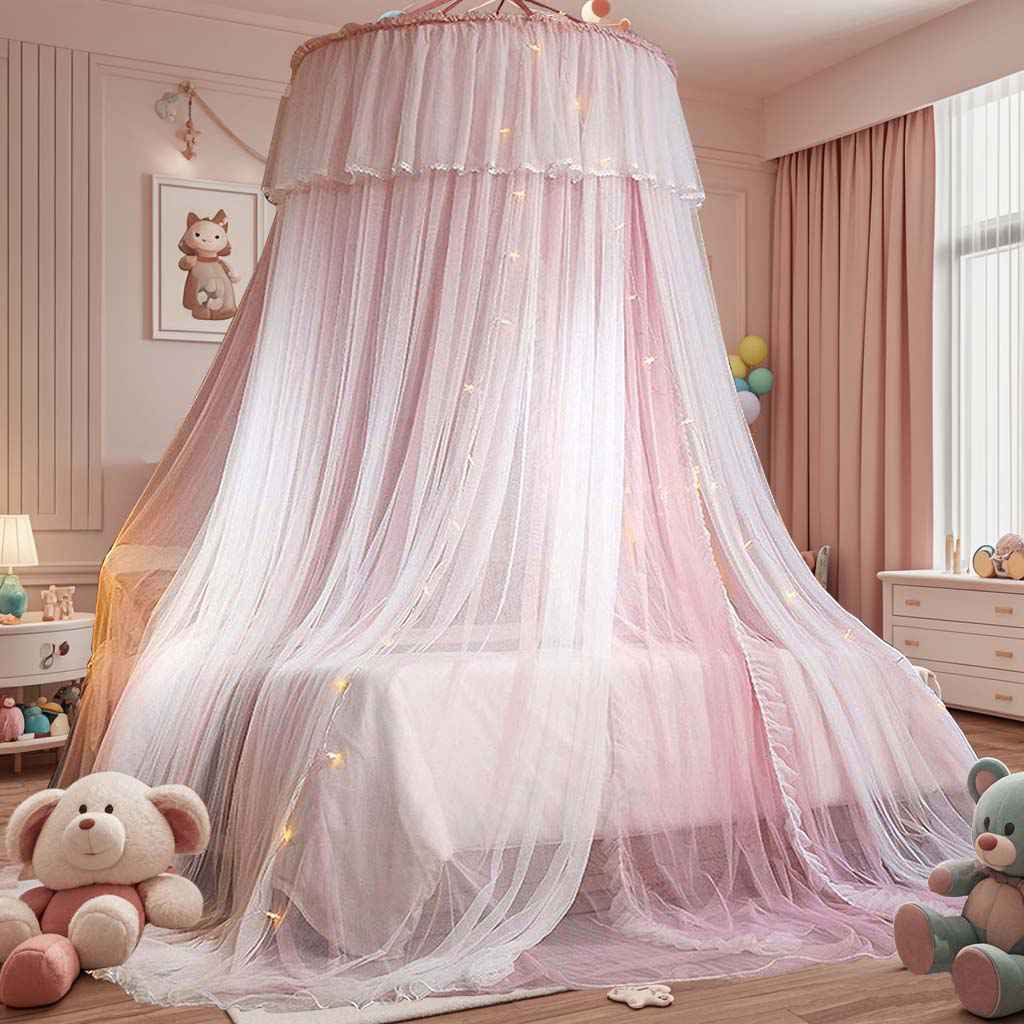
Mosquitoes are more than just a nuisance—they are carriers of deadly diseases such as malaria, dengue, yellow fever, and Zika virus. For centuries, mosquito nets have been one of the most effective tools for preventing mosquito bites and reducing the risk of infection. But can mosquitoes actually get through mosquito nets?
The answer depends on the quality, material, and proper use of the net. In this article, we’ll explore how mosquito nets work, why some fail, and how to choose the best one for complete protection.
Mosquito nets act as a physical shield, blocking mosquitoes from reaching you while allowing air to circulate. Their effectiveness depends on three key factors:
1. Mesh Size: The Smaller, The Better
Mosquitoes can squeeze through surprisingly small gaps.
The World Health Organization (WHO) recommends a mesh size of ≤ 0.6mm (156 holes per square inch) to block even the tiniest mosquitoes.
Larger holes (common in cheap nets) may allow mosquitoes to penetrate.
2. Material Strength & Durability
Low-quality nets tear easily, creating entry points.
Polyester and polyethylene are the most durable materials, resisting wear and tear.
Some nets are insecticide-treated (ITNs) for extra protection, killing mosquitoes on contact.
3. Proper Installation & Sealing
A net must fully enclose the sleeping area without gaps.
Mosquitoes can slip in through:
Loose edges
Openings near the bed frame
Small tears or holes

If you’ve been bitten inside a mosquito net, one of these issues is likely to blame:
Poor Mesh Quality
Some budget nets have larger holes (≥1mm), allowing mosquitoes to pass through.
Tears or Holes
Even a small rip makes the net ineffective.
Pets, children, or rough handling can damage the net over time.
Improper Setup
If the net doesn’t fully cover the bed, mosquitoes can enter from below or the sides.
Nets should be tucked under the mattress for a secure seal.
Old or Untreated Nets
Over time, untreated nets lose effectiveness.
Insecticide-treated nets (ITNs) lose their chemical protection after multiple washes.

To ensure 100% protection, look for these features:
Fine Mesh (≤0.6mm holes)
Blocks even the smallest mosquitoes (like Aedes aegypti, which carries dengue).
Strong, Tear-Resistant Fabric
Polyester or polyethylene nets last longer than cheap nylon.
Full Enclosure Design
Rectangular or box-shaped nets provide better coverage than conical nets.
Insecticide-Treated (Optional but Effective)
ITNs (like those with permethrin) kill mosquitoes on contact.
Breathable & Comfortable
A good net allows airflow while keeping pests out.
Even the best net won’t work if used incorrectly. Follow these tips:
Check for Gaps – Ensure the net is fully sealed around the bed.
Tuck It Under the Mattress – Prevents mosquitoes from crawling underneath.
Avoid Touching the Net While Sleeping – Mosquitoes can bite through if the net presses against your skin.
Wash Gently – Hand wash with mild detergent to preserve the mesh.
Replace When Worn Out – A damaged net is no longer protective.
Not if you use a high-quality, well-maintained net! A properly selected and installed mosquito net with fine mesh (≤0.6mm), durable material, and no gaps provides near-perfect protection against mosquito bites.
For the best results:
Choose a net with WHO-recommended mesh size.
Ensure it fully encloses your sleeping area.
Inspect regularly for tears or gaps.
By following these guidelines, you can sleep safely, bite-free, and protected from mosquito-borne diseases. Whether for travel, camping, or everyday use, a proper mosquito net is a simple, cost-effective way to stay safe from mosquitoes.